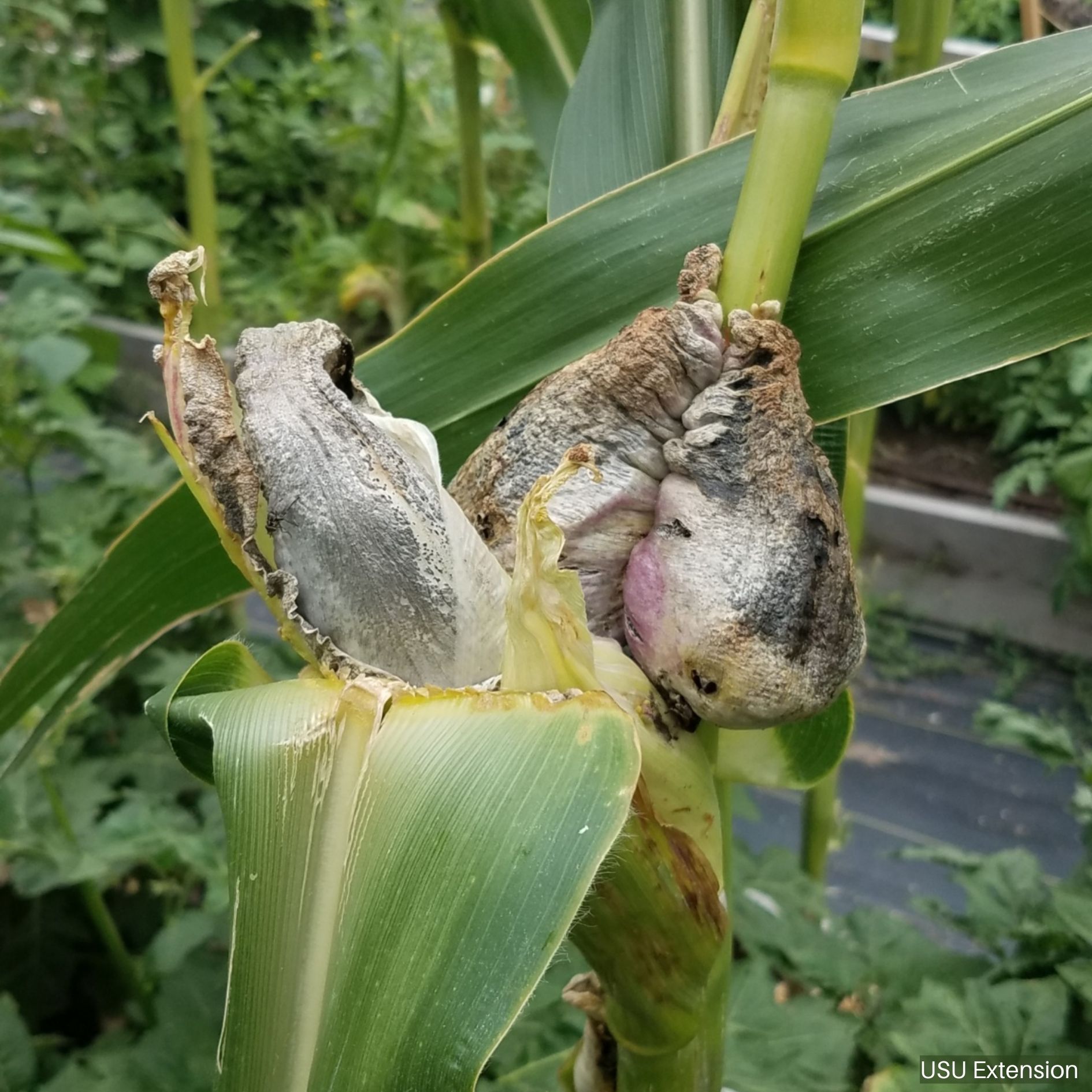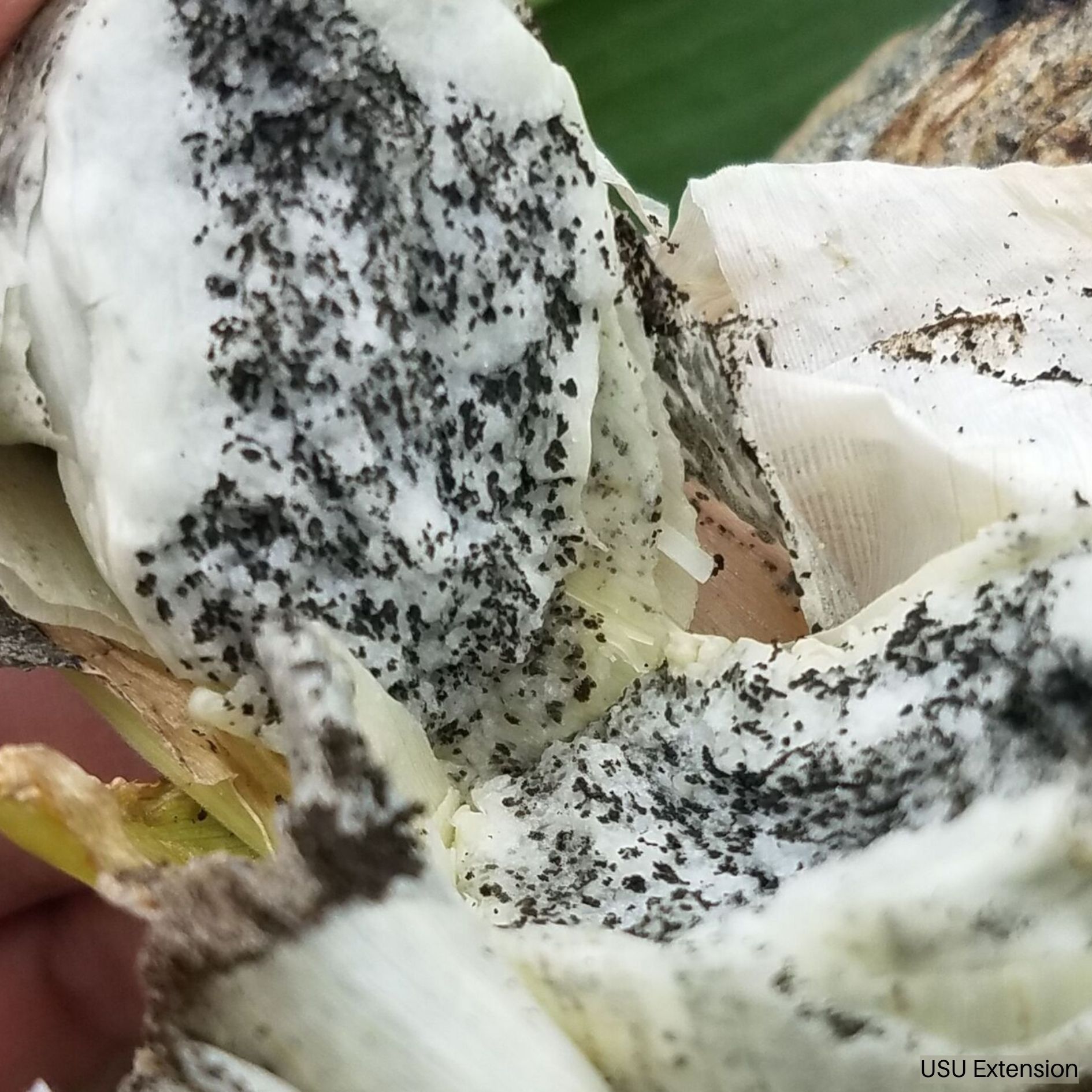Corn Smut
HOSTS
- Corn
BIOLOGY
Corn smut (Ustilago maydis) is a concern when plants become infected early in the growing season, on active growing points.
- Overwinters as spores in the soil or on infected corn debris.
- In late spring, windblown or rain splashed spores cause infections on succulent tissue.
- As galls age, they erupt and release thousands of spores that drop to the soil.
SYMPTOMS
White-gray, fleshy galls (swollen plant tissue) form on tassels, corn kernels, leaves, and shoots. When galls are young, they can be cooked and eaten. When galls are older, they turn black and powdery.
GENERAL MANAGEMENT
This disease is rare in Utah, but if symptoms develop while ears are still growing, ears become unmarketable.
- Inspect succulent corn tissues starting in late spring for spongy, gray galls.
- Once ears begin to form, pull back sheaths to check for any gall formation on kernels.
- Remove and dispose of galls throughout the season.
- Remove and destroy plant debris in the fall.
- Rotate crops.
- Fungicides will not provide control of common smut.
Precautionary Statement: Utah State University and its employees are not responsible for the use, misuse, or damage caused by application or misapplication of products or information mentioned in this document. All pesticides are labeled with ingredients, instructions, and risks, and not all are registered for edible crops. “Restricted use” pesticides may only be applied by a licensed applicator. The pesticide applicator is legally responsible for proper use. USU makes no endorsement of the products listed in this publication.





